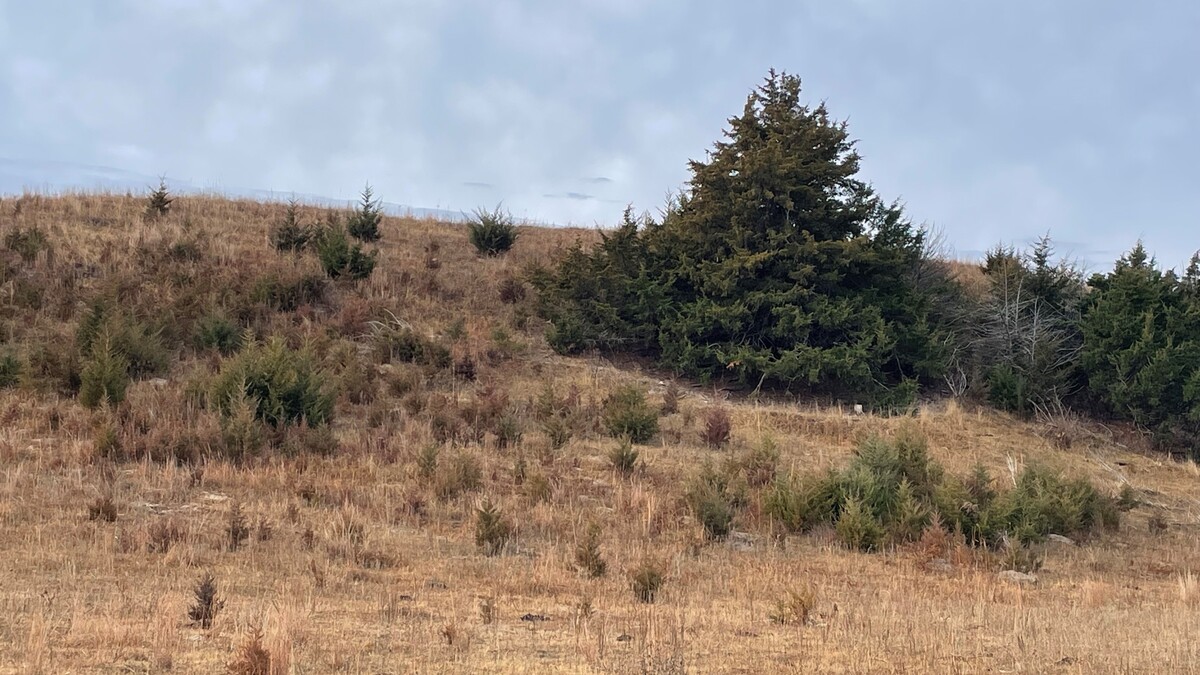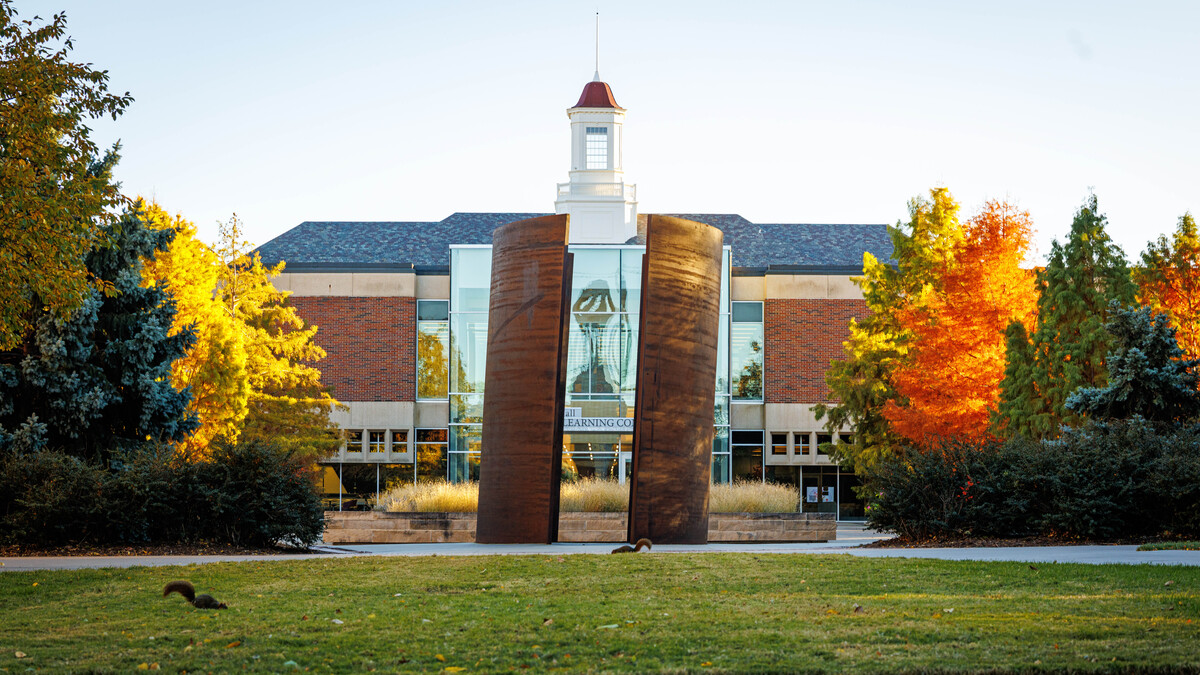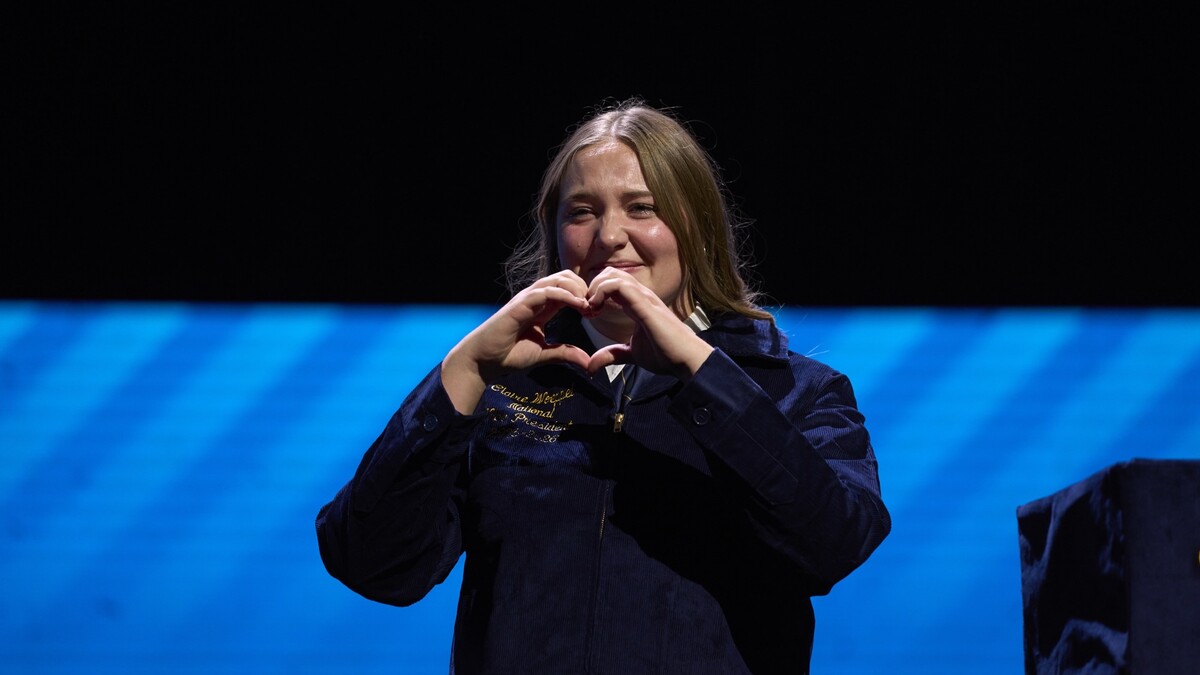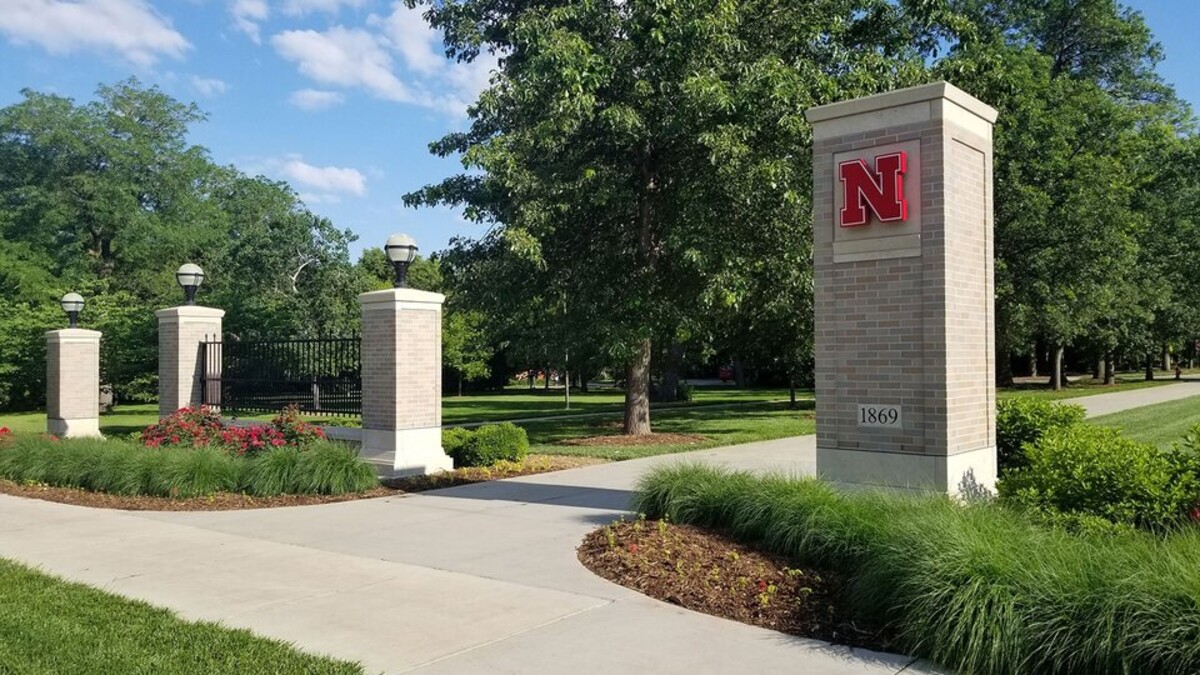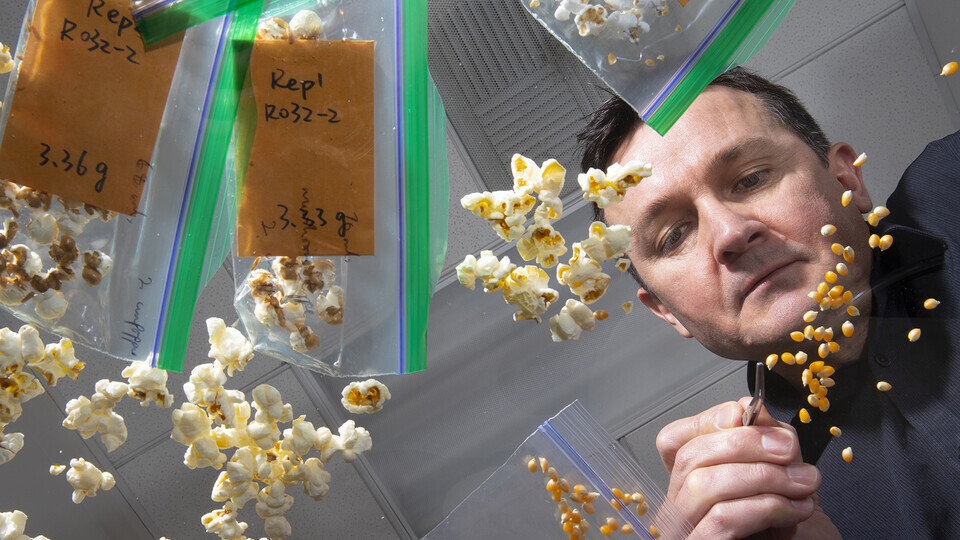
Lincoln, Neb. —A Nebraska-led coming attraction may soon pop into a global blockbuster.
Through a decade-long project supported by Conagra Foods, a University of Nebraska–Lincoln research team led by David Holding has naturally bred new varieties of popcorn that outperform today’s most popular kernels in their intrinsic nutritional value and taste.
“When we took on this challenge, I was 50% confident that we could deliver on improvements in terms of nutrition,” Holding said. “But at no time did I think this would lead us to a level of success that also delivered improved taste, texture and prebiotics over conventional popcorn.”
The Nebraska-made varieties — which are currently being tested by Conagra — offer nearly twice the level of lysine, an amino acid essential in the diets of humans and livestock, compared to popular popcorn varieties and other cereal grains.
Higher lysine can enhance nutritional value, thus adding economic value and broadening the appeal of the popular snack, Holding said.
Craig Chandler | University Communication and Marketing David Holding holds an ear of popcorn harvested in an East Campus field during a trial held in 2021.Popping out the dent
Dent corn, a worldwide crop and the signature variety of the Midwest, is deficient in lysine. But in the 1990s, researchers successfully bred a gene variant known as opaque-2 into dent corn. In lowering the production of normally dominant prolamin proteins, opaque-2 allowed for a rise in non-prolamins: those containing lysine and another essential amino acid, tryptophan. The resulting variety — Quality-Protein Maize, or QPM — has since helped combat malnutrition in many developing countries.
With the backing of Conagra Foods, Holding decided to try the same in popcorn.
“It turns out that that’s really difficult to do,” said Holding, professor and associate department head in the Department of Agronomy and Horticulture.
The problem was at once simple and complex: Popcorn containing opaque-2 wouldn’t pop. And that problem stemmed from what’s in its name: Opaque-2 tends to turn popcorn’s normally hard, glassy kernels into softer, chalkier forms resistant to popping.
Agronomists had previously managed to breed the undesirable softness trait out of the QPM dent corn, which was otherwise more susceptible to pests and harvesting damage. But they did so mostly without knowing which genes helped restore the kernels’ glassy consistency.
Craig Chandler | University Communication and Marketing Pollen pours out as Cleopatra Babor pollinates the silks of an ear of corn. Babor, a senior plant pathology major, worked in David Holding’s lab as part of a summer 2021 McNair Scholar research project.Holding had devoted considerable time to identifying swaths of the corn genome responsible for restoring that glassiness. So he set out to cross-breed multiple generations of the QPM dent corn with popcorn varieties selected to contain the restorative genes.
The outcome? High-lysine Quality Protein Popcorn (QPP) that pops as well as the original variety.
“When this project started, I wasn’t sure we could achieve that, given that people hadn’t been very successful in transferring beneficial traits from dent corn to popcorn in the past,” Holding said. “We’re the first to take the dent QPM variety and successfully convert that into popcorn, achieving high lysine and maintaining popping.
“This is a product that lends itself to organic production and can be marketed as a novel popcorn variety, as consumers are paying more attention to their foods’ nutritional value. For popcorn breeding in general, this also shows the potential for mining other traits from dent corn into popcorn to improve the crop’s agronomic performance.”
Other advancements include blind taste testing — many of the Nebraska QPP hybrids outperformed the non-QPP lines in terms of taste and texture — and working with the Nebraska Food for Health Center to show positive prebiotic impacts of the popcorn.
“What we’ve developed here is a complete protein snack that can be marketed as a superfood due to its positive prebiotic qualities,” Holding said. “And it isn’t just a snack food. It is also quite nutritious and could be beneficial as a dietary supplement in developing countries where protein is needed.
“This work has truly been much more successful than we expected.”
Craig Chandler | University Communication and Marketing Leandra Marshall, a former graduate student, sorts popped popcorn for quality as part of a the Nebraska-developed line that is high in protein.Grad student success
The work has been supported by a trio of graduate students who provide leadership in Holding’s lab.
Ying Ren contributed to some early successes, piggybacking on Holding’s initial work to create the high-lysine variety and crossing it to the popcorn parent. Through multiple levels of back-crossing, Ren and the team generated variants that maintained the lysine levels and were nearly equivalent in the ability to pop.
A second graduate student, Leandra Parsons, was responsible for taking the new variants and crossing them to make multiple hybrids for testing. Ultimately, her work led the team to show that the new variants were comparable to the yields and quality of the Conagra lines.
Craig Chandler | University Communication and Marketing Grad student Jonathan Niyorukundo harvests an ear of corn in David Holding’s research field on East Campus.Today, Jonathan Niyorukundo, a graduate student from Rwanda, is assisting Holding. His work has recently pivoted to applying breeding lessons learned through the popcorn project to sweet corn.
Holding said the team has bred the nutritional traits of High Quality Maize into sweet corn. They are also developing a colored variant, selecting for antioxidant-rich, red kernels.
“One goal is to make a nutritionally beneficial, Big Red sweet corn variety,” Holding said, noting that it could be for sale on the market in two years. “The project is far advanced and we have a number of lines that are red. We’re selecting for those that are super tender and super sweet.
“This builds on our successes in developing, through natural cross-breeding processes, popcorn variants that have greater nutritional value,” Holding said. “Ultimately, both of these projects are driven by the desire to have a marketable product at the end.”
Craig Chandler | University Communication and Marketing Aerial view of an popcorn test field on the university's East Campus.Learn more
Review the major research breakthroughs achieved through the work of Holding’s lab in these five published studies:
